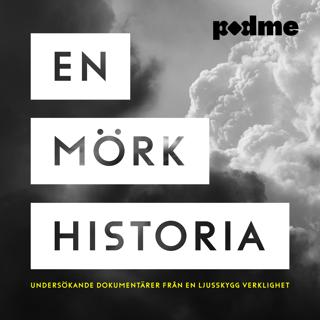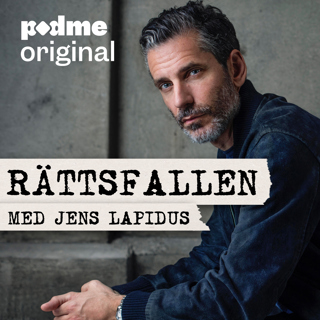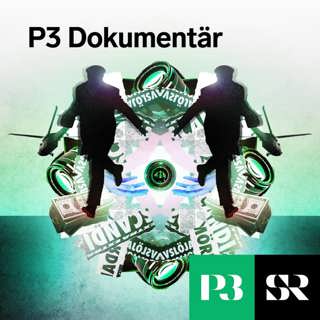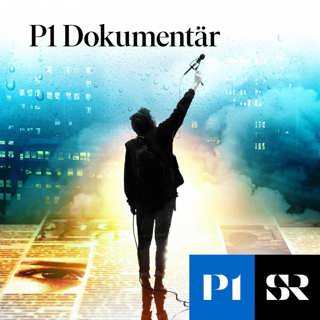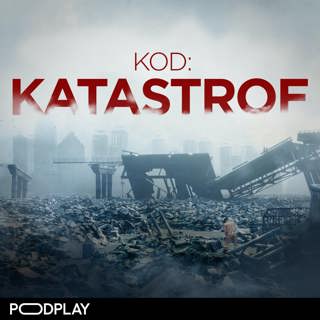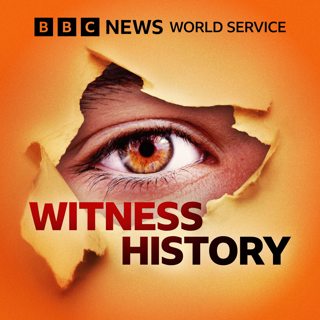
How bloodshed in Selma led to the US Voting Rights Act 1965
In March 1965, hundreds of peaceful civil rights protesters in Selma were brutally beaten by Alabama state troops.They had been marching to demonstrate against the denial of voting rights to Black Americans.The bloodshed in Selma prompted President Lyndon B Johnson to push for the Voting Rights Act of 1965, one of the most significant pieces of legislation ever passed by Congress. The landmark Act was brought in to tackle racial discrimination during elections and to guarantee the rights of African Americans to vote. Farhana Haider has been listening to the archive. A version of this programme was first broadcast in 2020.Eye-witness accounts brought to life by archive. Witness History is for those fascinated by the past. We take you to the events that have shaped our world through the eyes of the people who were there. For nine minutes every day, we take you back in time and all over the world, to examine wars, coups, scientific discoveries, cultural moments and much more. Recent episodes explore everything from football in Brazil, the history of the ‘Indian Titanic’ and the invention of air fryers, to Public Enemy’s Fight The Power, subway art and the political crisis in Georgia. We look at the lives of some of the most famous leaders, artists, scientists and personalities in history, including: visionary architect Antoni Gaudi and the design of the Sagrada Familia; Michael Jordan and his bespoke Nike trainers; Princess Diana at the Taj Mahal; and Görel Hanser, manager of legendary Swedish pop band Abba on the influence they’ve had on the music industry. You can learn all about fascinating and surprising stories, such as the time an Iraqi journalist hurled his shoes at the President of the United States in protest of America’s occupation of Iraq; the creation of the Hollywood commercial that changed advertising forever; and the ascent of the first Aboriginal MP.(Photo: Civil rights leader Dr Martin Luther King at the Selma to Montgomery march. Credit: Getty Images)
7 Mars 9min

The Great Toyota War
In 1987, a decades-long war in Chad reached a dramatic turning point in what would come to be known as the Great Toyota War. Named after the rugged pick-up trucks that transformed modern desert warfare, this campaign saw the lightly armed Chadian forces out manoeuvre Libya’s heavily fortified military. They achieved a string of astonishing victories, including the capture of the Libyan airbase at Ouadi Dum. Former Chadian officer Mahamat Saleh Bani recalls the speed, ingenuity, and bravery that defined this extraordinary chapter of African history. He speaks to Pearse Lynch. An Africa Digital Audio production.Eye-witness accounts brought to life by archive. Witness History is for those fascinated by the past. We take you to the events that have shaped our world through the eyes of the people who were there. For nine minutes every day, we take you back in time and all over the world, to examine wars, coups, scientific discoveries, cultural moments and much more. Recent episodes explore everything from football in Brazil, the history of the ‘Indian Titanic’ and the invention of air fryers, to Public Enemy’s Fight The Power, subway art and the political crisis in Georgia. We look at the lives of some of the most famous leaders, artists, scientists and personalities in history, including: visionary architect Antoni Gaudi and the design of the Sagrada Familia; Michael Jordan and his bespoke Nike trainers; Princess Diana at the Taj Mahal; and Görel Hanser, manager of legendary Swedish pop band Abba on the influence they’ve had on the music industry. You can learn all about fascinating and surprising stories, such as the time an Iraqi journalist hurled his shoes at the President of the United States in protest of America’s occupation of Iraq; the creation of the Hollywood commercial that changed advertising forever; and the ascent of the first Aboriginal MP.(Photo: Great Toyota War. Credit: AFP)
6 Mars 10min

The US invasion of Panama
In December 1989, more than 20,000 US soldiers descended on the tiny Central American country of Panama. The Americans sought to remove the country’s leader, General Manuel Noriega, who sought refuge from the invading forces with the Papal Ambassador. Noriega was a dictator and had been indicted in Florida over drug trafficking. In 2010, Neal Razzell spoke to Enrique Jelenszky, who assisted communications between the US troops and Noriega. Eye-witness accounts brought to life by archive. Witness History is for those fascinated by the past. We take you to the events that have shaped our world through the eyes of the people who were there. For nine minutes every day, we take you back in time and all over the world, to examine wars, coups, scientific discoveries, cultural moments and much more. Recent episodes explore everything from football in Brazil, the history of the ‘Indian Titanic’ and the invention of air fryers, to Public Enemy’s Fight The Power, subway art and the political crisis in Georgia. We look at the lives of some of the most famous leaders, artists, scientists and personalities in history, including: visionary architect Antoni Gaudi and the design of the Sagrada Familia; Michael Jordan and his bespoke Nike trainers; Princess Diana at the Taj Mahal; and Görel Hanser, manager of legendary Swedish pop band Abba on the influence they’ve had on the music industry. You can learn all about fascinating and surprising stories, such as the time an Iraqi journalist hurled his shoes at the President of the United States in protest of America’s occupation of Iraq; the creation of the Hollywood commercial that changed advertising forever; and the ascent of the first Aboriginal MP.(Photo: A US soldier raises the barbed wire barricade to stop demonstrators from marching towards the Vatican Embassy, where Noriega is seeking asylum/ Credit:REUTERS/Corinne Dufka)
5 Mars 10min

The invention of the shopping trolley
In 1937, American supermarket owner Sylvan Goldman came up with a way to get his customers to spend more.He introduced his 'folding basket carriers' in his Humpty Dumpty chain in Oklahoma, hiring models to push them round his stores.They caught on, becoming known as shopping carts in the USA.Rachel Naylor uses clips from a 1977 CBS interview of Sylvan with Charles Kuralt to tell the story.Eye-witness accounts brought to life by archive. Witness History is for those fascinated by the past. We take you to the events that have shaped our world through the eyes of the people who were there. For nine minutes every day, we take you back in time and all over the world, to examine wars, coups, scientific discoveries, cultural moments and much more.Recent episodes explore everything from football in Brazil, the history of the ‘Indian Titanic’ and the invention of air fryers, to Public Enemy’s Fight The Power, subway art and the political crisis in Georgia. We look at the lives of some of the most famous leaders, artists, scientists and personalities in history, including: visionary architect Antoni Gaudi and the design of the Sagrada Familia; Michael Jordan and his bespoke Nike trainers; Princess Diana at the Taj Mahal; and Görel Hanser, manager of legendary Swedish pop band Abba on the influence they’ve had on the music industry. You can learn all about fascinating and surprising stories, such as the time an Iraqi journalist hurled his shoes at the President of the United States in protest of America’s occupation of Iraq; the creation of the Hollywood commercial that changed advertising forever; and the ascent of the first Aboriginal MP.(Photo: Sylvan Goldman, with models of his shopping trolley. Credit: Don Tullous, Oklahoma Publishing Company Photography Collection, Courtesy of the Oklahoma Historical Society)
4 Mars 10min

The Calais 'Jungle' migrant camp
In 2015, Europe was in the grip of a migrant crisis, as more than one million people fled regions including the Middle East. Many set their sights on a new life in the UK. But, in order to get there, they had to cross the English Channel. One of the most common methods was to hide aboard vehicles destined for Britain at the French port city of Calais. This led to the creation of a squalid migrant camp outside Calais, known as the "Jungle". It was populated by seven to ten thousand people at its largest. Jean-Marc Puissesseau was head of the Port of Calais during the crisis. He speaks to Ben Henderson.Eye-witness accounts brought to life by archive. Witness History is for those fascinated by the past. We take you to the events that have shaped our world through the eyes of the people who were there. For nine minutes every day, we take you back in time and all over the world, to examine wars, coups, scientific discoveries, cultural moments and much more. Recent episodes explore everything from football in Brazil, the history of the ‘Indian Titanic’ and the invention of air fryers, to Public Enemy’s Fight The Power, subway art and the political crisis in Georgia. We look at the lives of some of the most famous leaders, artists, scientists and personalities in history, including: visionary architect Antoni Gaudi and the design of the Sagrada Familia; Michael Jordan and his bespoke Nike trainers; Princess Diana at the Taj Mahal; and Görel Hanser, manager of legendary Swedish pop band Abba on the influence they’ve had on the music industry. You can learn all about fascinating and surprising stories, such as the time an Iraqi journalist hurled his shoes at the President of the United States in protest of America’s occupation of Iraq; the creation of the Hollywood commercial that changed advertising forever; and the ascent of the first Aboriginal MP.(Photo: Chris Patten hands over flag during Honk Kong handover ceremony. Credit: Guillaume Pinon/NurPhoto via Getty Images)
3 Mars 9min

Africa’s stolen Metis children
In 1953, in what was then the Belgian Congo, four-year-old Marie-José Loshi was forcibly removed from her family’s village and taken more than 600km away to live in a Catholic institute. The cause of her kidnapping was the colour of her skin. Under Belgium’s colonial rule, thousands of mixed-race children were taken from their homes and separated from their families. The state hoped the actions would quash any sense of revolt against the colony. More than 70 years later, Marie-José and four other women took on the former colonial power, seeking justice for themselves and the many other mixed-race children that suffered the same fate. She speaks to Kaine Pieri.Eye-witness accounts brought to life by archive. Witness History is for those fascinated by the past. We take you to the events that have shaped our world through the eyes of the people who were there. For nine minutes every day, we take you back in time and all over the world, to examine wars, coups, scientific discoveries, cultural moments and much more. Recent episodes explore everything from football in Brazil, the history of the ‘Indian Titanic’ and the invention of air fryers, to Public Enemy’s Fight The Power, subway art and the political crisis in Georgia. We look at the lives of some of the most famous leaders, artists, scientists and personalities in history, including: visionary architect Antoni Gaudi and the design of the Sagrada Familia; Michael Jordan and his bespoke Nike trainers; Princess Diana at the Taj Mahal; and Görel Hanser, manager of legendary Swedish pop band Abba on the influence they’ve had on the music industry. You can learn all about fascinating and surprising stories, such as the time an Iraqi journalist hurled his shoes at the President of the United States in protest of America’s occupation of Iraq; the creation of the Hollywood commercial that changed advertising forever; and the ascent of the first Aboriginal MP.(Photo: Marie-José Loshi. Credit: Marie-José Loshi)
28 Feb 10min

Surviving Chile's tsunami
In 2010, an 8.8 magnitude earthquake struck the coast of Chile. It shook the central and southern parts of the country for more than three minutes, causing widespread damage which destroyed buildings, bridges and roads. The earthquake triggered a tsunami in the Pacific Ocean, which travelled 600 kilometres west to the remote island of Juan Fernandez where Alison Campbell and her family were on holiday.Hundreds of people died, and thousands were left injured and homeless. Alison Campbell tells Jane Chambers what it was like when the tsunami struck. Eye-witness accounts brought to life by archive. Witness History is for those fascinated by the past. We take you to the events that have shaped our world through the eyes of the people who were there. For nine minutes every day, we take you back in time and all over the world, to examine wars, coups, scientific discoveries, cultural moments and much more.Recent episodes explore everything from football in Brazil, the history of the ‘Indian Titanic’ and the invention of air fryers, to Public Enemy’s Fight The Power, subway art and the political crisis in Georgia. We look at the lives of some of the most famous leaders, artists, scientists and personalities in history, including: visionary architect Antoni Gaudi and the design of the Sagrada Familia; Michael Jordan and his bespoke Nike trainers; Princess Diana at the Taj Mahal; and Görel Hanser, manager of legendary Swedish pop band Abba on the influence they’ve had on the music industry. You can learn all about fascinating and surprising stories, such as the time an Iraqi journalist hurled his shoes at the President of the United States in protest of America’s occupation of Iraq; the creation of the Hollywood commercial that changed advertising forever; and the ascent of the first Aboriginal MP.(Photo: Rescue workers in Juan Fernandez. Credit: JORGE AMENGUAL/AFP via Getty Images).
27 Feb 9min

Denmark’s Inuit children experiment
In 1951, a group of 22 Inuit children from Greenland were sent to live with foster parents in Denmark. It was part of a social experiment aimed at improving the lot of the Inuit people. But, for the children involved it was a confusing experience. Helene Thiesen was one of those children. She spoke to Ellen Otzen in 2015.Eye-witness accounts brought to life by archive. Witness History is for those fascinated by the past. We take you to the events that have shaped our world through the eyes of the people who were there. For nine minutes every day, we take you back in time and all over the world, to examine wars, coups, scientific discoveries, cultural moments and much more. Recent episodes explore everything from football in Brazil, the history of the ‘Indian Titanic’ and the invention of air fryers, to Public Enemy’s Fight The Power, subway art and the political crisis in Georgia. We look at the lives of some of the most famous leaders, artists, scientists and personalities in history, including: visionary architect Antoni Gaudi and the design of the Sagrada Familia; Michael Jordan and his bespoke Nike trainers; Princess Diana at the Taj Mahal; and Görel Hanser, manager of legendary Swedish pop band Abba on the influence they’ve had on the music industry. You can learn all about fascinating and surprising stories, such as the time an Iraqi journalist hurled his shoes at the President of the United States in protest of America’s occupation of Iraq; the creation of the Hollywood commercial that changed advertising forever; and the ascent of the first Aboriginal MP.(Photo: Helene Thiesen. Credit: Helene Thiesen)
26 Feb 10min




